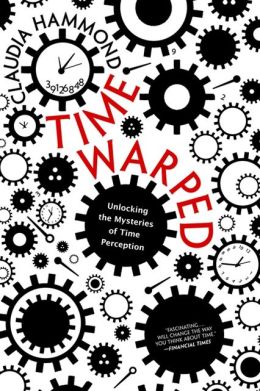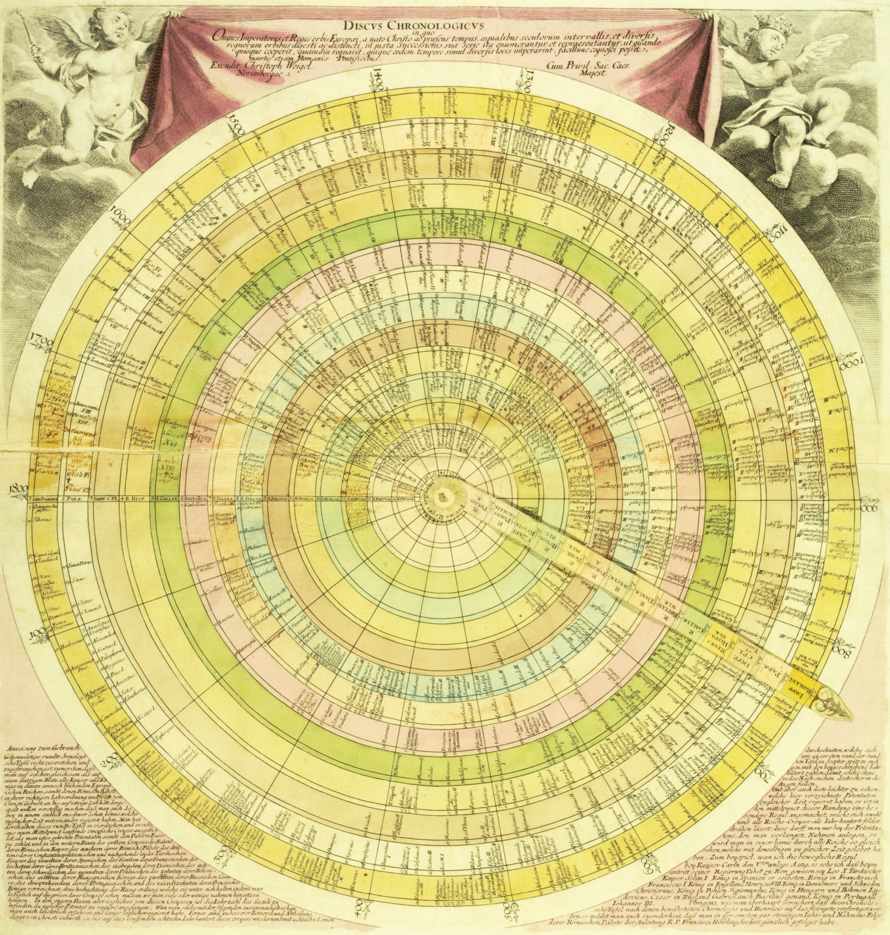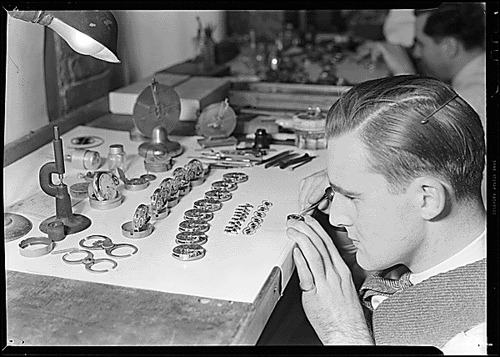“Time perception matters because it is the experience of time that roots us in our mental reality.”
 Given my soft spot for famous diaries, it should come as no surprise that I keep one myself. Perhaps the greatest gift of the practice has been the daily habit of reading what I had written on that day a year earlier; not only is it a remarkable tool of introspection and self-awareness, but it also illustrates that our memory “is never a precise duplicate of the original [but] a continuing act of creation” and how flawed our perception of time is — almost everything that occurred a year ago appears as having taken place either significantly further in the past (“a different lifetime,” I’d often marvel at this time-illusion) or significantly more recently (“this feels like just last month!”). Rather than a personal deficiency of those of us befallen by this tendency, however, it turns out to be a defining feature of how the human mind works, the science of which is at first unsettling, then strangely comforting, and altogether intensely interesting.
Given my soft spot for famous diaries, it should come as no surprise that I keep one myself. Perhaps the greatest gift of the practice has been the daily habit of reading what I had written on that day a year earlier; not only is it a remarkable tool of introspection and self-awareness, but it also illustrates that our memory “is never a precise duplicate of the original [but] a continuing act of creation” and how flawed our perception of time is — almost everything that occurred a year ago appears as having taken place either significantly further in the past (“a different lifetime,” I’d often marvel at this time-illusion) or significantly more recently (“this feels like just last month!”). Rather than a personal deficiency of those of us befallen by this tendency, however, it turns out to be a defining feature of how the human mind works, the science of which is at first unsettling, then strangely comforting, and altogether intensely interesting.
That’s precisely what acclaimed BBC broadcaster and psychology writer Claudia Hammond explores in Time Warped: Unlocking the Mysteries of Time Perception (public library) — a fascinating foray into the idea that our experience of time is actively created by our own minds and how these sensations of what neuroscientists and psychologists call “mind time” are created. As disorienting as the concept might seem — after all, we’ve been nursed on the belief that time is one of those few utterly reliable and objective things in life — it is also strangely empowering to think that the very phenomenon depicted as the unforgiving dictator of life is something we might be able to shape and benefit from. Hammond writes:
We construct the experience of time in our minds, so it follows that we are able to change the elements we find troubling — whether it’s trying to stop the years racing past, or speeding up time when we’re stuck in a queue, trying to live more in the present, or working out how long ago we last saw our old friends. Time can be a friend, but it can also be an enemy. The trick is to harness it, whether at home, at work, or even in social policy, and to work in line with our conception of time. Time perception matters because it is the experience of time that roots us in our mental reality. Time is not only at the heart of the way we organize life, but the way we experience it.

Discus chronologicus, a depiction of time by German engraver Christoph Weigel, published in the early 1720s; from Cartographies of Time. (Click for details)
Among the most intriguing illustrations of “mind time” is the incredible elasticity of how we experience time. (“Where is it, this present?,” William James famously wondered. “It has melted in our grasp, fled ere we could touch it, gone in the instant of becoming.”) For instance, Hammond points out, we slow time down when gripped by mortal fear — the cliche about the slow-motion car crash is, in fact, a cognitive reality. This plays out even in situations that aren’t life-or-death per se but are still associated with strong feelings of fear. Hammond points to a study in which people with arachnophobia were asked to look at spiders — the very object of their intense fear — for 45 seconds and they overestimated the elapsed time. The same pattern was observed in novice skydivers, who estimated the duration of their peers’ falls as short, whereas their own, from the same altitude, were deemed longer.
Inversely, time seems to speed up as we get older — a phenomenon of which competing theories have attempted to make light. One, known as the “proportionality theory,” uses pure mathematics, holding that a year feels faster when you’re 40 than when you’re 8 because it only constitutes one fortieth of your life rather than a whole eighth. Among its famous proponents are Vladimir Nabokov and William James. But Hammond remains unconvinced:
The problem with the proportionality theory is that it fails to account for the way we experience time at any one moment. We don’t judge one day in the context of our whole lives. If we did, then for a 40-year-old every single day should flash by because it is less than one fourteen-thousandth of the life they’ve had so far. It should be fleeting and inconsequential, yet if you have nothing to do or an enforced wait at an airport for example, a day at 40 can still feel long and boring and surely longer than a fun day at the seaside packed with adventure for a child. … It ignores attention and emotion, which … can have a considerable impact on time perception.
Another theory suggests that perhaps it is the tempo of life in general that has accelerated, making things from the past appear as slower, including the passage of time itself.

But one definite change does take place with age: As we grow older, we tend to feel like the previous decade elapsed more rapidly, while the earlier decades of our lives seem to have lasted longer. Similarly, we tend to think of events that took place in the past 10 years as having happened more recently than they actually did. (Quick: What year did the devastating Japanese tsunami hit? When did we love Maurice Sendak?) Conversely, we perceive events that took place more than a decade ago as having happened even longer ago. (When did Princess Diana die? What year was the Chernobyl disaster?) This, Hammond points out, is known as “forward telescoping”:
It is as though time has been compressed and — as if looking through a telescope — things seem closer than they really are. The opposite is called backward or reverse telescoping, also known as time expansion. This is when you guess that events happened longer ago than they really did. This is rare for distant events, but not uncommon for recent weeks.
[…]
The most straightforward explanation for it is called the clarity of memory hypothesis, proposed by the psychologist Norman Bradburn in 1987. This is the simple idea that because we know that memories fade over time, we use the clarity of a memory as a guide to its recency. So if a memory seems unclear we assume it happened longer ago.
And yet the brain does keep track of time, even if inaccurately. Hammond explains the factors that come into play with our inner chronometry:
It is clear that however the brain counts time, it has a system that is very flexible. It takes account of [factors like] emotions, absorption, expectations, the demands of a task and even the temperature .The precise sense we are using also makes a difference; an auditory event appears longer than a visual one. Yet somehow the experience of time created by the mind feels very real, so real that we feel we know what to expect from it, and are perpetually surprised whenever it confuses us by warping.
In fact, memory — which is itself a treacherous act of constant transformation with each recollection — is intricately related to this warping process:
We know that time has an impact on memory, but it is also memory that creates and shapes our experience of time. Our perception of the past moulds our experience of time in the present to a greater degree than we might realize. It is memory that creates the peculiar, elastic properties of time. It not only gives us the ability to conjure up a past experience at will, but to reflect on those thoughts through autonoetic consciousness — the sense that we have of ourselves as existing across time — allowing us to re-experience a situation mentally and to step outside those memories to consider their accuracy.

But, curiously, we are most likely to vividly remember experiences we had between the ages of 15 and 25. What the social sciences might simply call “nostalgia” psychologists have termed the “reminiscence bump” and, Hammond argues, it could be the key to why we feel like time speeds up as we get older:
The reminiscence bump involves not only the recall of incidents; we even remember more scenes from the films we saw and the books we read in our late teens and early twenties. … The bump can be broken down even further — the big news events that we remember best tend to have happened earlier in the bump, while our most memorable personal experiences are in the second half.
[…]
The key to the reminiscence bump is novelty. The reason we remember our youth so well is that it is a period where we have more new experiences than in our thirties or forties. It’s a time for firsts — first sexual relationships, first jobs, first travel without parents, first experience of living away from home, the first time we get much real choice over the way we spend our days. Novelty has such a strong impact on memory that even within the bump we remember more from the start of each new experience.
Most fascinating of all, however, is the reason the “reminiscence bump” happens in the first place: Hammond argues that because memory and identity are so closely intertwined, it is in those formative years, when we’re constructing our identity and finding our place in the world, that our memory latches onto particularly vivid details in order to use them later in reinforcing that identity. Interestingly, Hammond points out, people who undergo a major transformation of identity later in life — say, changing careers or coming out — tend to experience a second identity bump, which helps them reconcile and consolidate their new identity.
So what makes us date events more accurately? Hammond sums up the research:
You are most likely to remember the timing of an event if it was distinctive, vivid, personally involving and is a tale you have recounted many times since.

But one of the most enchanting instances of time-warping is what Hammond calls the Holiday Paradox — “the contradictory feeling that a good holiday whizzes by, yet feels long when you look back.” (An “American translation” might term it the Vacation Paradox.) Her explanation of its underlying mechanisms is reminiscent of legendary psychologist Daniel Kahneman’s theory of the clash between the “experiencing self” and the “remembering self”. Hammond explains:
The Holiday Paradox is caused by the fact that we view time in our minds in two very different ways — prospectively and retrospectively. Usually these two perspectives match up, but it is in all the circumstances where we remark on the strangeness of time that they don’t.
[…]
We constantly use both prospective and retrospective estimation to gauge time’s passing. Usually they are in equilibrium, but notable experiences disturb that equilibrium, sometimes dramatically. This is also the reason we never get used to it, and never will. We will continue to perceive time in two ways and continue to be struck by its strangeness every time we go on holiday.
Like the “reminiscence bump,” the Holiday Paradox has to do with the quality and concentration of new experiences, especially in contrast to familiar daily routines. During ordinary life, time appears to pass at a normal pace, and we use markers like the start of the workday, weekends, and bedtime to assess the rhythm of things. But once we go on vacation, the stimulation of new sights, sounds, and experiences injects a disproportionate amount of novelty that causes these two types of time to misalign. The result is a warped perception of time.

Ultimately, this source of great mystery and frustration also holds the promise of great liberation and empowerment. Hammond concludes:
We will never have total control over this extraordinary dimension. Time will warp and confuse and baffle and entertain however much we learn about its capacities. But the more we learn, the more we can shape it to our will and destiny. We can slow it down or speed it up. We can hold on to the past more securely and predict the future more accurately. Mental time-travel is one of the greatest gifts of the mind. It makes us human, and it makes us special.
Time Warped, a fine addition to these essential reads on time, goes on to explore such philosophically intriguing and practically useful questions as how our internal clocks dictate our lives, what the optimal pace of productivity might be, and why inhabiting life with presence is the only real way to master time. Pair it with this remarkable visual history of humanity’s depictions of time.
Photographs: Public domain images unless otherwise noted
Donating = Loving
Bringing you (ad-free) Brain Pickings takes hundreds of hours each month. If you find any joy and stimulation here, please consider becoming a Supporting Member with a recurring monthly donation of your choosing, between a cup of tea and a good dinner:
|
|
♥ $7 / month♥ $3 / month♥ $10 / month♥ $25 / month |

You can also become a one-time patron with a single donation in any amount:

 Brain Pickings has a free weekly newsletter. It comes out on Sundays and offers the week’s best articles. Here’s what to expect. Like? Sign up.
Brain Pickings has a free weekly newsletter. It comes out on Sundays and offers the week’s best articles. Here’s what to expect. Like? Sign up.
Brain Pickings takes 450+ hours a month to curate and edit across the different platforms, and remains banner-free. If it brings you any joy and inspiration, please consider a modest donation – it lets me know I'm doing something right.









 Image: "Portrait of the Wife of Juan Agustin Cean Bermudez" by Francisco de Goya y Lucientes
Image: "Portrait of the Wife of Juan Agustin Cean Bermudez" by Francisco de Goya y Lucientes



















 Image: Cecily Brown, "High Society"
Image: Cecily Brown, "High Society"





































